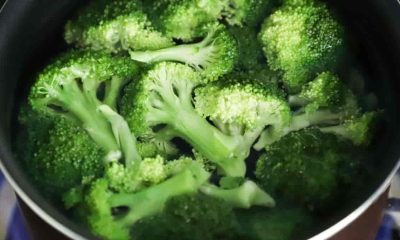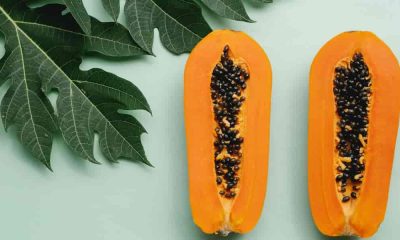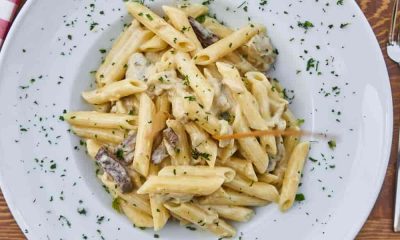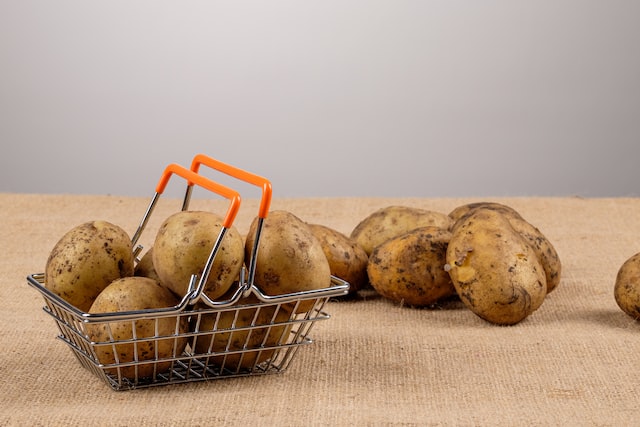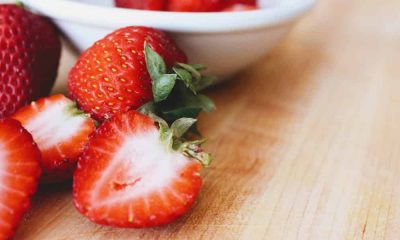Nutrition
Quinoa Is Gluten Free? Here is Your Complete Guide

Here is your complete guide to quinoa is gluten free
Introduction To Quinoa is Gluten Free
Gluten-free diets have gained tremendous popularity in recent years, with more and more people seeking gluten-free alternatives to support their overall health and well-being. This dietary shift is particularly essential for individuals with celiac disease and gluten sensitivity, as gluten can cause severe digestive issues and other adverse reactions. In this article, we will explore quinoa as a gluten-free superfood and delve into its numerous health benefits that go beyond its gluten-free nature. Here is you complete guide to whether quinoa is gluten free?
What is Gluten?
To understand the significance of a gluten-free diet, let’s first define gluten. Gluten is a protein composite found in grains such as wheat, barley, and rye. It gives dough its elasticity and contributes to the fluffy texture of bread and baked goods. However, for individuals with celiac disease and gluten sensitivity, consuming gluten can trigger a range of symptoms, including abdominal pain, bloating, fatigue, and even damage to the small intestine.
Quinoa Nutrition Facts
| Nutrient | Amount |
|---|---|
| Calories | 222 |
| Carbohydrates | 39 grams |
| Protein | 8 grams |
| Fat | 4 grams |
| Fiber | 5 grams |
| Calcium | 31 mg |
| Iron | 2.8 mg |
| Magnesium | 118 mg |
| Phosphorus | 281 mg |
| Potassium | 318 mg |
| Sodium | 13 mg |
| Zinc | 2 mg |
| Vitamin B6 | 0.3 mg |
| Folate | 77 mcg |
| Vitamin E | 1 mg |
| Thiamin (Vitamin B1) | 0.2 mg |
| Riboflavin (Vitamin B2) | 0.2 mg |
| Niacin (Vitamin B3) | 1.2 mg |
| Vitamin K | 1.6 mcg |
Quinoa: The Gluten-Free Superfood
Quinoa (pronounced keen-wah) is an ancient grain that has gained tremendous popularity in recent years. Originating from the Andean region of South America, quinoa has been cultivated for thousands of years and was highly regarded by the Incas as the “mother of all grains.” While technically not a grain but a seed, quinoa is commonly referred to as a pseudocereal due to its grain-like properties.
One of the most remarkable aspects of quinoa is its gluten-free nature. This means that individuals with celiac disease or gluten sensitivity can enjoy quinoa without worrying about adverse reactions. But beyond being gluten-free, quinoa offers a wide array of health benefits that make it a true superfood.
Nutritional Profile of Quinoa
Quinoa stands out for its exceptional nutritional content. It is a complete protein source, containing all nine essential amino acids required by the body. This makes it an excellent option for vegetarians, vegans, and those looking to increase their protein intake. Additionally, quinoa is rich in fiber, vitamins, and minerals, including magnesium, iron, and phosphorus.
Health Benefits of Quinoa
Promotes Heart Health
Quinoa contains heart-healthy fats, such as omega-3 fatty acids, and is low in saturated fats. It also provides a good balance of carbohydrates and fiber, which can help regulate blood sugar levels and lower the risk of cardiovascular diseases.
Aids in Weight Management
Quinoa is a valuable ally for those aiming to maintain a healthy weight. Its high protein and fiber content contribute to increased satiety, helping you feel fuller for longer and reducing the likelihood of overeating.
Supports Digestion and Gut Health
The fiber content in quinoa promotes healthy digestion and helps prevent constipation. It also acts as a prebiotic, nourishing the beneficial bacteria in your gut and supporting a healthy gut microbiome.
Quinoa and Gluten-Free Recipes
Now that we understand the many health benefits of quinoa, let’s explore some delightful gluten-free recipes that incorporate this versatile superfood.
Quinoa Salad with Fresh Vegetables
A refreshing and nutritious salad packed with colorful vegetables and a zesty dressing, perfect for a light lunch or as a side dish.
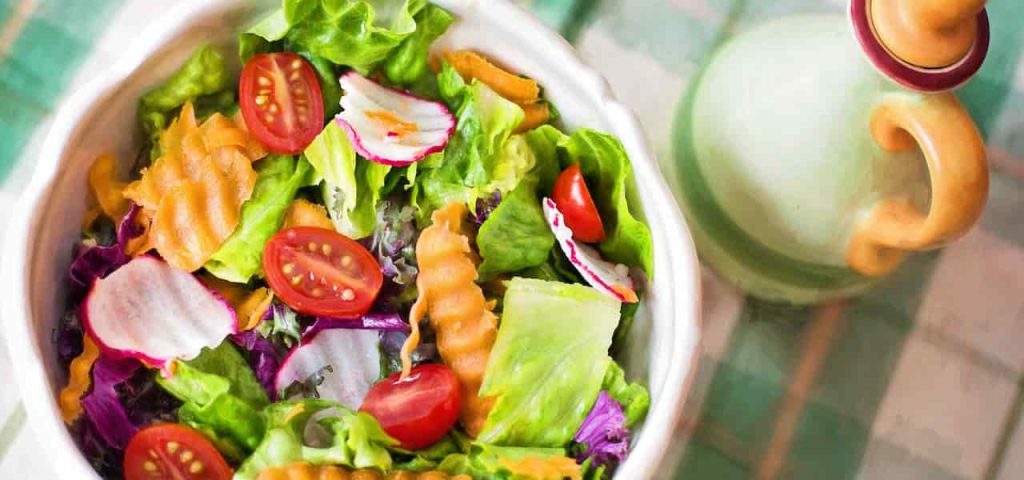
Quinoa Breakfast Bowl
Start your day with a protein-packed and fiber-rich breakfast bowl that combines cooked quinoa, fresh fruits, nuts, and a drizzle of honey or maple syrup.
Quinoa-Stuffed Bell Peppers: Impress your guests with these vibrant and flavorful stuffed bell peppers filled with a delightful mixture of quinoa, vegetables, and spices.

Quinoa and Black Bean Burgers
Indulge in a satisfying and wholesome burger alternative made from quinoa, black beans, and a blend of herbs and spices. These plant-based burgers are not only delicious but also a great source of protein.
Quinoa Porridge with Berries
Enjoy a warm and comforting breakfast by substituting oats with quinoa in your traditional porridge recipe. Top it off with a handful of fresh berries for added antioxidants and flavor.
Incorporating Quinoa into a Gluten-Free Diet
Now that you have some enticing recipes to try, let’s discuss how to seamlessly incorporate quinoa into your gluten-free diet.
Selecting and Cooking Quinoa
Look for high-quality quinoa at your local grocery store or online. Rinse the quinoa thoroughly before cooking to remove any bitter residue. To cook quinoa, combine it with water or broth in a 2:1 ratio and simmer for around 15-20 minutes until the liquid is absorbed and the quinoa is fluffy.
Substituting Quinoa for Gluten-Containing Grains
Use cooked quinoa as a versatile substitute for gluten-containing grains like wheat, barley, and rye. Use it as a base for salads, stir-fries, or as a side dish instead of rice or pasta.
Exploring Quinoa-Based Gluten-Free Products
The popularity of quinoa has led to an array of gluten-free products made with quinoa flour or flakes. Look for quinoa-based pasta, bread, crackers, and other baked goods for convenient and gluten-free options.
Frequently Asked Questions about Quinoa and Gluten
Let’s address some common questions related to quinoa and its gluten-free properties:
Can quinoa be cross-contaminated with gluten?
While quinoa is naturally gluten-free, cross-contamination may occur during processing or packaging. To ensure your quinoa is gluten-free, look for certified gluten-free products or brands that follow strict manufacturing processes to prevent cross-contamination.
Is quinoa safe for individuals with celiac disease?
Yes, It is considered safe for individuals with celiac disease, as it is naturally gluten-free. However, it is crucial to check for certified gluten-free labels to avoid any potential cross-contamination.
Read More About Calories in a Boiled Egg.
How does quinoa compare to other gluten-free grains?
Quinoa stands out among other gluten-free grains due to its superior nutritional profile, as it contains more protein, fiber, and essential nutrients. Its versatility and pleasant texture also make it a popular choice for those following a gluten-free diet.
Read More About Sit-Ups vs. Crunches.
Can you eat quinoa if you are gluten-free?
Yes, absolutely! It is an excellent option for individuals who follow a gluten-free diet. Quinoa is naturally gluten-free, making it a safe and nutritious choice for those with celiac disease or gluten sensitivity. It serves as a fantastic alternative to gluten-containing grains like wheat, barley, and rye.
Read More About the Benefits of Good Morning Exercise.
Which grains are gluten-free?
Several grains are naturally gluten-free and suitable for individuals who need to avoid gluten. Some common gluten-free grains include:
- Quinoa: Quinoa is a complete protein source and is highly versatile in cooking.
- Rice: Brown rice, white rice, and wild rice are gluten-free options that can be used in various dishes.
- Buckwheat: Despite its name, buckwheat is not related to wheat and is gluten-free. It is often used to make gluten-free flour or enjoyed as groats.
- Amaranth: Amaranth is a nutrient-rich grain that is naturally gluten-free and can be cooked similarly to rice or quinoa.
- Millet: Millet is a small, gluten-free grain that can be used as a base for pilafs, side dishes, or even as a breakfast porridge.
- Corn: Corn and cornmeal are gluten-free, making them suitable for individuals with gluten sensitivity. However, it’s essential to ensure that the corn products you choose are not cross-contaminated with gluten during processing.
Read More About The Ultimate Warm-Up Routine for a Killer Back Workout.
Does quinoa have gluten or carbs?
It is naturally gluten-free, which means it does not contain gluten proteins. It is an excellent alternative for individuals who need to avoid gluten in their diet due to celiac disease or gluten sensitivity.
Read More About Nutritional Information for Kale.
As for carbohydrates, quinoa does contain carbs, but it is also a good source of complex carbohydrates, which are considered healthier than simple carbohydrates. The carbohydrates in quinoa are digested more slowly, providing sustained energy and keeping you feeling fuller for longer. Quinoa is also a great source of dietary fiber, which aids in digestion and supports overall gut health.
Read More About The Power of Proper Nutrition.
What kind of quinoa is gluten-free?
All types of quinoa are naturally gluten-free. Whether it’s white quinoa, red quinoa, black quinoa, or any other variety, they all do not contain gluten. The gluten-free nature of quinoa is one of the reasons it has become so popular as a gluten-free alternative in cooking and baking. However, it’s important to ensure that the quinoa you purchase is not cross-contaminated with gluten during processing. Look for certified gluten-free quinoa or brands that follow strict manufacturing processes to prevent any potential cross-contamination.
Read More About The Ultimate Nutrition Facts of Plums.
Conclusion
Quinoa, the gluten-free superfood, offers a wide range of health benefits while satisfying the dietary needs of individuals with celiac disease and gluten sensitivity. Its exceptional nutritional profile, versatility in recipes, and ease of incorporation into a gluten-free diet make it a valuable addition to any healthy eating plan. So, go ahead and explore the world of quinoa, delighting in its unique flavors and nourishing your body with its incredible health benefits. Embrace the gluten-free goodness of quinoa and enjoy a vibrant, nutritious, and fulfilling lifestyle.
Nutrition
Carbs in Parsnips vs Potatoes: What’s Your Ideal Carb Source?
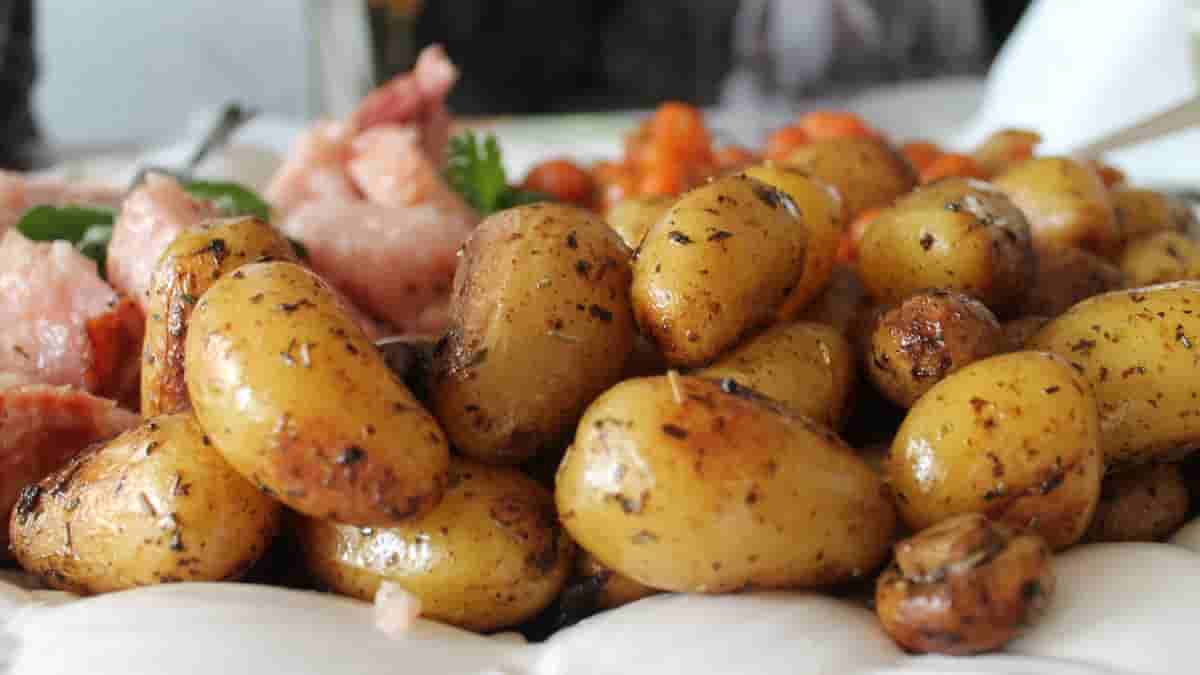
Here is your complete guide to carbs in parsnips vs potatoes
Introduction to Carbs in Parsnips vs Potatoes
In the ever-evolving world of nutrition and healthy eating, understanding the differences in carbohydrate content between various vegetables has become increasingly important. Parsnips and potatoes, two versatile root vegetables, often find themselves at the center of this discussion. As we delve into the nuances of carbs in parsnips vs potatoes, we’ll uncover the key considerations for incorporating these nutritious options into a balanced diet. So let’s explore everything about carbs in parsnips vs potatoes. Here is your what do you need to know about carbs in parsnips vs potatoes.
Carbohydrates play a crucial role in our overall health, providing us with energy and fueling our bodies’ essential functions. However, not all carbohydrates are created equal, and the source of these macronutrients can significantly impact their effects on our bodies. By exploring the carb content in parsnips vs potatoes, we can make more informed choices that align with our individual dietary needs and health goals.
Whether you’re managing your blood sugar, following a low-carb lifestyle, or simply seeking to optimize your nutrient intake, understanding the carb differences between parsnips and potatoes can be a game-changer. In this comprehensive article, we’ll dive deep into the nutritional profiles of these two versatile vegetables, compare their carbohydrate content, and explore the practical applications and considerations for incorporating them into your meals.
Nutritional Breakdown of Parsnips
Parsnips are a root vegetable that often flies under the radar, overshadowed by their more popular counterparts, such as carrots and potatoes. However, these unassuming veggies pack a nutritional punch that deserves our attention.
Carbohydrate Content in Parsnips
Parsnips are a low-carb vegetable, containing approximately 17 grams of carbohydrates per 100 grams of raw, unpeeled parsnips. Of these carbohydrates, a significant portion, around 4.9 grams, is dietary fiber, which plays a crucial role in maintaining a healthy digestive system and promoting feelings of fullness.
Fiber, Vitamins, and Minerals in Parsnips
In addition to their carbohydrate content, parsnips are a rich source of various vitamins and minerals. They are particularly high in vitamin C, vitamin K, and folate, as well as minerals like potassium, manganese, and phosphorus. These nutrients contribute to overall health, supporting immune function, bone health, and energy metabolism.
Glycemic Index and Glycemic Load of Parsnips
The glycemic index (GI) of parsnips is relatively low, ranging from 52 to 67, depending on the variety and preparation method. This means that parsnips are less likely to cause rapid spikes in blood sugar levels compared to high-GI foods. Additionally, the glycemic load (GL) of parsnips is also relatively low, typically falling between 5 and 10, making them a suitable choice for individuals managing their blood sugar levels or following a low-GI diet.
Nutritional Breakdown of Potatoes
Potatoes are a staple food in many cultures around the world, known for their versatility and comforting qualities. However, their nutritional profile is often the subject of debate, particularly when it comes to their carbohydrate content.
Carbohydrate Content in Potatoes
Potatoes are a high-carb vegetable, containing approximately 17 grams of carbohydrates per 100 grams of raw, unpeeled potatoes. This carbohydrate content is primarily in the form of starch, with a smaller portion being dietary fiber, around 2 grams per 100 grams.
Fiber, Vitamins, and Minerals in Potatoes
While potatoes are not as fiber-rich as parsnips, they still provide a decent amount of this important nutrient. Additionally, potatoes are a good source of various vitamins and minerals, including vitamin C, vitamin B6, potassium, and magnesium, among others. These nutrients contribute to overall health and well-being.
Glycemic Index and Glycemic Load of Potatoes
The glycemic index of potatoes can vary quite a bit, ranging from 56 to 94, depending on the variety, cooking method, and other factors. In general, potatoes are considered a high-GI food, which means they can cause rapid spikes in blood sugar levels. The glycemic load of potatoes is also relatively high, typically falling between 12 and 20, depending on the portion size.
Comparing Carbs in Parsnips vs Potatoes
Now that we’ve explored the nutritional profiles of parsnips and potatoes individually, let’s dive deeper into the carb differences between these two vegetables.
Carbohydrate, Fiber, Glycemic Index, and Glycemic Load Comparison of Parsnips and Potatoes
| Nutrient | Parsnips | Potatoes |
|---|---|---|
| Total Carbohydrates (per 100g) | 17 g | 17 g |
| Fiber (per 100g) | 4.9 g | 2 g |
| Glycemic Index | 52-67 | 56-94 |
| Glycemic Load | 5-10 | 12-20 |
Carbohydrate Content Comparison
As shown in the table, both parsnips and potatoes contain approximately 17 grams of carbohydrates per 100 grams of the raw, unpeeled vegetable. However, the composition of these carbohydrates differs significantly.
Fiber Comparison
Parsnips contain nearly 2.5 times more dietary fiber than potatoes, with 4.9 grams of fiber per 100 grams compared to only 2 grams in potatoes. This higher fiber content in parsnips can contribute to feelings of fullness, improved digestion, and better blood sugar management.
Glycemic Index and Glycemic Load Comparison
The glycemic index and glycemic load of parsnips are significantly lower than those of potatoes. Parsnips have a GI range of 52-67, while potatoes can have a GI as high as 94. Similarly, the GL of parsnips (5-10) is much lower than the GL of potatoes (12-20). This means that parsnips are less likely to cause rapid spikes in blood sugar levels, making them a more suitable choice for individuals with diabetes or those following a low-GI diet.
Nutritional Differences and Implications for Health
The carb differences between parsnips and potatoes have important implications for health. The higher fiber content and lower glycemic impact of parsnips make them a more diabetes-friendly and heart-healthy option compared to potatoes. Additionally, the nutrient-dense profile of parsnips, with their abundance of vitamins, minerals, and antioxidants, can contribute to overall well-being and support various bodily functions.
Factors Affecting Carb Content in Parsnips and Potatoes
While the carb differences between parsnips and potatoes are significant, it’s important to note that there are several factors that can influence the carbohydrate content of these vegetables.
Cooking Methods and Their Impact on Carb Content
The way parsnips and potatoes are prepared can affect their carbohydrate content. For example, roasting or baking these vegetables can result in a slight increase in carbohydrates due to the concentration of nutrients as moisture is lost. Conversely, boiling or steaming parsnips and potatoes may result in a lower carbohydrate content per serving, as some of the carbohydrates are leached into the cooking water.
Storage and Preparation Techniques
The storage and preparation methods used for parsnips and potatoes can also impact their carbohydrate content. Proper storage, such as keeping them in a cool, dark place, can help preserve the vegetables’ nutrient profiles, including their carbohydrate content. Additionally, peeling or leaving the skin on can affect the fiber and carbohydrate content, as the skin often contains a significant portion of the vegetable’s fiber.
Variety and Cultivar Differences
The specific variety or cultivar of parsnips and potatoes can also influence their carbohydrate content. Different cultivars may have slightly different nutrient profiles, including variations in carbohydrate, fiber, and other macronutrient levels.
Practical Applications and Considerations
Now that we’ve explored the carb differences between parsnips and potatoes, let’s dive into the practical applications and considerations for incorporating these vegetables into a balanced diet.
Incorporating Parsnips and Potatoes into a Balanced Diet
Both parsnips and potatoes can be valuable additions to a healthy, balanced diet. Parsnips, with their lower carb and higher fiber content, can be a great choice for individuals following a low-carb or diabetes-friendly eating plan. Potatoes, on the other hand, can be a satisfying and nutrient-dense option when consumed in moderation as part of a well-rounded meal plan.
Portion Control and Carb Management
When it comes to managing carbohydrate intake, portion control is key. While parsnips are a lower-carb option, it’s still important to be mindful of serving sizes. Potatoes, with their higher carb and glycemic impact, may require more careful portion control, especially for individuals with diabetes or those following a low-carb lifestyle.
Carbohydrate Content of Parsnips and Potatoes in Common Serving Sizes
| Serving Size | Parsnips (Carbs) | Potatoes (Carbs) |
|---|---|---|
| 1 cup, raw | 13 g | 26 g |
| 1 medium, cooked | 9 g | 15 g |
| 1/2 cup, cooked | 6 g | 12 g |
Recipes and Meal Ideas Featuring Parsnips and Potatoes
Parsnips and potatoes can be incorporated into a wide variety of delicious and nutritious recipes. Here are a few ideas:
- Roasted Parsnip and Potato Medley
- Parsnip and Potato Soup
- Parsnip Fries or Potato Wedges
- Parsnip and Potato Gratin
- Parsnip and Potato Mash
Carb-Conscious Recipes Featuring Parsnips and Potatoes
| Recipe | Carbs per Serving |
|---|---|
| Roasted Parsnip and Potato Medley | 15 g |
| Parsnip and Potato Soup | 12 g |
| Parsnip Fries | 8 g |
| Parsnip and Potato Gratin | 18 g |
| Parsnip and Potato Mash | 14 g |
Impact on Blood Sugar Levels
Understanding how parsnips and potatoes affect blood sugar levels is crucial, especially for individuals managing conditions like diabetes.
- Glycemic Response
- Both parsnips and potatoes can raise blood sugar levels, but the extent varies based on factors like cooking method and portion size.
- Pairing these vegetables with protein and healthy fats can help mitigate their glycemic impact.
FAQs
What is the difference in carb content between parsnips and potatoes?
The total carbohydrate content of parsnips and potatoes is similar, with both containing around 17 grams of carbs per 100 grams of the raw, unpeeled vegetable. However, the composition of these carbohydrates differs significantly. Parsnips have a higher fiber content (4.9 g per 100 g) compared to potatoes (2 g per 100 g), and they also have a lower glycemic index and glycemic load.
Read Also: Dairy Free Protein Snacks.
Are parsnips or potatoes better for managing blood sugar levels?
Parsnips are generally considered a better choice for managing blood sugar levels due to their lower glycemic index and glycemic load. The higher fiber content in parsnips also helps to slow the absorption of carbohydrates, leading to more gradual increases in blood sugar levels. Potatoes, on the other hand, are considered a higher-GI food, which can cause rapid spikes in blood sugar.
Read Also: Keto Funfetti Cake.
Can parsnips be substituted for potatoes in recipes?
Yes, parsnips can often be substituted for potatoes in many recipes, especially those that involve roasting, mashing, or using the vegetables as a side dish. The similar texture and flavor profile of parsnips and potatoes make them interchangeable in many dishes. However, it’s important to note that the carbohydrate and fiber content will differ, so portion sizes may need to be adjusted accordingly.
Read Also: Protein Powder No Bloating.
How do the fiber contents of parsnips and potatoes compare?
Parsnips contain significantly more dietary fiber than potatoes. Parsnips have around 4.9 grams of fiber per 100 grams, while potatoes have only 2 grams of fiber per 100 grams. This higher fiber content in parsnips can contribute to feelings of fullness, improved digestion, and better blood sugar management.
Read Also: The FlatBelly Tea.
What are the other nutritional differences between parsnips and potatoes?
In addition to the differences in carbohydrate and fiber content, parsnips and potatoes also differ in their vitamin and mineral profiles. Parsnips are generally higher in vitamins C, K, and folate, as well as minerals like potassium, manganese, and phosphorus. Potatoes, on the other hand, are a good source of vitamins C and B6, as well as potassium and magnesium.
Read Also: Slow Carb Diet Desserts.
Conclusion
In the ongoing quest for a healthier, more balanced diet, understanding the carb differences between parsnips and potatoes is a crucial step. While both vegetables are nutritious and versatile, the lower carb and higher fiber content of parsnips, coupled with their lower glycemic impact, make them a more diabetes-friendly and heart-healthy option compared to potatoes.
Read Also: The Surprising Health Benefit of Celery Tea.
By incorporating both parsnips and potatoes into a well-rounded meal plan, you can enjoy the unique flavors and textures these vegetables offer while also reaping the benefits of their distinct nutritional profiles. Remember to pay attention to portion sizes and preparation methods to optimize the carbohydrate and fiber content to suit your individual dietary needs and health goals.
Read Also: Carb Cycling Meal Plan Vegetarian.
Nutrition
Carb Cycling Meal Plan Vegetarian: Achieve Your Goals Faster
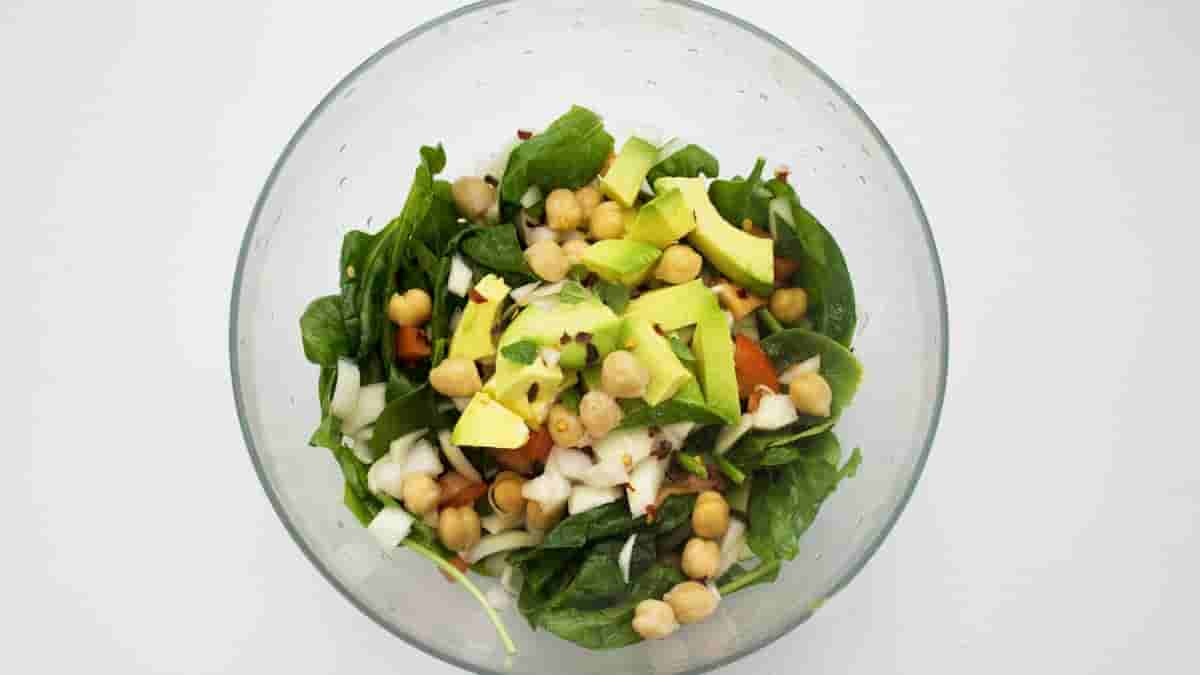
Here is your complete guide to carb cycling meal plan vegetarian
Introduction to Carb Cycling Meal Plan Vegetarian
Carb cycling is a popular dietary approach that involves alternating between high-carb, low-carb, and no-carb days to optimize energy levels, fat loss, and muscle growth. For vegetarians looking to harness the benefits of carb cycling, creating a well-rounded carb cycling meal plan vegetarian is key. This guide will walk you through the fundamentals of carb cycling, how to develop a personalized meal plan, delicious vegetarian-friendly recipes, and practical tips for successful implementation.
Carb cycling is a strategic dietary method that involves varying carbohydrate intake on different days to achieve specific health and fitness goals. For vegetarians, finding the right balance of macronutrients while following a carb cycling meal plan vegetarian can be both rewarding and challenging. By understanding the principles of carb cycling and tailoring them to a vegetarian lifestyle, you can optimize your nutrition for better performance and overall well-being.
Understanding Carb Cycling
- Definition: Carb cycling is a nutritional strategy that involves alternating between high, low, and no-carb days to manipulate insulin levels and promote fat loss while preserving muscle mass.
- Principles:
- High-carb days: Boost energy levels and support muscle growth.
- Low-carb days: Enhance fat burning and improve insulin sensitivity.
- No-carb days: Promote metabolic flexibility and fat adaptation.
Basics of Vegetarian Nutrition
A balanced vegetarian diet is essential for supporting overall health and wellbeing. Here are some key principles to keep in mind when planning your carb cycling meals as a vegetarian.
- Essential Nutrients for Vegetarians
- Protein: Ensure adequate intake of plant-based protein sources such as legumes, tofu, tempeh, and seitan.
- Carbohydrates: Focus on complex carbohydrates like whole grains, fruits, and vegetables to provide sustained energy.
- Fats: Include healthy fats from sources like nuts, seeds, avocados, and olive oil to support hormone production and nutrient absorption.
- Tips for Balancing Macronutrients
- Aim for a balance of protein, carbohydrates, and fats in each meal to support satiety and nutrient absorption.
- Experiment with different combinations of foods to find what works best for your individual needs and preferences.
Developing a Carb Cycling Meal Plan
To create an effective carb cycling meal plan vegetarian, you need to determine your caloric needs and macronutrient ratios for each type of day. Here’s a breakdown of how to structure your meal plan:
High-Carb Day Meal Plan
| Meal | Menu | Nutrient Breakdown |
|---|---|---|
| Breakfast | Quinoa Bowl with Berries | Carbs: 45g, Protein: 10g, Fat: 5g |
| Lunch | Lentil Salad with Avocado | Carbs: 50g, Protein: 15g, Fat: 12g |
| Dinner | Chickpea Curry with Brown Rice | Carbs: 55g, Protein: 20g, Fat: 8g |
Low-Carb Day Meal Plan
| Meal | Menu | Nutrient Breakdown |
|---|---|---|
| Breakfast | Tofu Scramble with Spinach | Carbs: 10g, Protein: 15g, Fat: 8g |
| Lunch | Zucchini Noodles with Pesto | Carbs: 12g, Protein: 8g, Fat: 10g |
| Dinner | Cauliflower Rice Stir-Fry | Carbs: 15g, Protein: 18g, Fat: 7g |
No-Carb Day Meal Plan
| Meal | Menu | Nutrient Breakdown |
|---|---|---|
| Breakfast | Chia Seed Pudding | Carbs: 5g, Protein: 8g, Fat: 10g |
| Lunch | Greek Salad with Tofu | Carbs: 8g, Protein: 12g, Fat: 15g |
| Dinner | Grilled Portobello Mushrooms | Carbs: 3g, Protein: 10g, Fat: 6g |
Vegetarian-Friendly Carb Cycling Recipes
Elevate your carb cycling meal plan vegetarian with these delicious and nutritious recipes:
High-Carb Day Recipes
- Sweet Potato and Black Bean Tacos
- Ingredients: Sweet potatoes, black beans, corn tortillas, avocado
- Macronutrient breakdown: Carbs: 30g, Protein: 12g, Fat: 8g
- Quinoa Stuffed Bell Peppers
- Ingredients: Quinoa, bell peppers, tomatoes, feta cheese
- Macronutrient breakdown: Carbs: 25g, Protein: 10g, Fat: 6g
Low-Carb Day Recipes
- Eggplant Lasagna
- Ingredients: Eggplant, marinara sauce, ricotta cheese, spinach
- Macronutrient breakdown: Carbs: 15g, Protein: 20g, Fat: 10g
- Cauliflower Crust Pizza
- Ingredients: Cauliflower, mozzarella cheese, tomato sauce, veggies
- Macronutrient breakdown: Carbs: 10g, Protein: 15g, Fat: 8g
No-Carb Day Recipes
- Zucchini Noodle Alfredo
- Ingredients: Zucchini noodles, cashew cream sauce, nutritional yeast
- Macronutrient breakdown: Carbs: 5g, Protein: 8g, Fat: 12g
- Avocado Cucumber Salad
- Ingredients: Avocado, cucumber, cherry tomatoes, lemon dressing
- Macronutrient breakdown: Carbs: 8g, Protein: 5g, Fat: 10g
Implementing Carb Cycling
Successfully incorporating a carb cycling meal plan vegetarian into your lifestyle requires planning and consistency. Here are some tips to help you navigate the process:
- Track your progress: Keep a food diary to monitor how your body responds to different carb cycling days.
- Stay hydrated: Drink plenty of water to support digestion and overall health.
- Listen to your body: Adjust your meal plan based on how you feel and perform during workouts.
- Seek professional guidance: Consult a nutritionist or dietitian for personalized advice and support.
Tips for Success
As you embark on your carb cycling journey as a vegetarian, keep these tips in mind to ensure success and sustainability.
- Consistency is Key: Stick to your carb cycling plan consistently to see results over time.
- Listen to Your Body: Pay attention to hunger and fullness cues, and adjust your meal plan accordingly.
- Stay Hydrated: Drink plenty of water throughout the day to support hydration and overall health.
- Be Flexible: Don’t be afraid to modify your meal plan based on your individual needs and preferences.
FAQs
What is the best carb cycling meal plan for vegetarians?
The best carb cycling meal plan vegetarian is one that is tailored to your individual goals, preferences, and dietary needs. Experiment with different carb cycling ratios and meal timings to find what works best for you.
How do I determine my carb cycling macros?
To determine your carb cycling macros, calculate your daily caloric needs based on your goals (weight loss, maintenance, muscle gain) and then allocate your macronutrients (carbs, protein, fats) accordingly for each type of day (high, low, no-carb).
Read Also: Dairy Free Protein Snacks.
Can I still build muscle on a carb cycling vegetarian diet?
Yes, you can build muscle on a carb cycling vegetarian diet by ensuring an adequate intake of protein, healthy fats, and carbohydrates on high-carb days to support muscle growth and recovery.
Read Also: Keto Funfetti Cake.
How long does it take to see results from a carb cycling vegetarian diet?
Results from a carb cycling vegetarian diet can vary depending on individual factors such as metabolism, activity level, and adherence to the meal plan. Typically, you may start noticing changes in energy levels and body composition within a few weeks of consistent implementation.
Read Also: Protein Powder No Bloating.
What are some common mistakes to avoid when carb cycling as a vegetarian?
- Neglecting protein intake: Ensure you are getting enough protein to support muscle maintenance and growth.
- Overcomplicating meal planning: Keep your meals simple and focus on whole, nutrient-dense foods.
- Ignoring your body’s signals: Listen to how your body responds to different carb cycling days and adjust your plan accordingly.
Read Also: The FlatBelly Tea.
Conclusion
In conclusion, a well-structured carb cycling meal plan vegetarian can be a powerful tool for achieving your health and fitness goals. By understanding the principles of carb cycling, developing a personalized meal plan, and incorporating delicious vegetarian-friendly recipes, you can optimize your nutrition for better performance and overall well-being.
Read Also: The Surprising Health Benefit of Celery Tea.
Remember to stay hydrated, listen to your body, and seek professional guidance as needed. With patience and consistency, you can harness the benefits of carb cycling and enjoy a healthier, more energetic you.
Read Also: Slow Carb Diet Desserts.
Nutrition
Slow Carb Diet Desserts: Craving-Worthy Healthful Delights
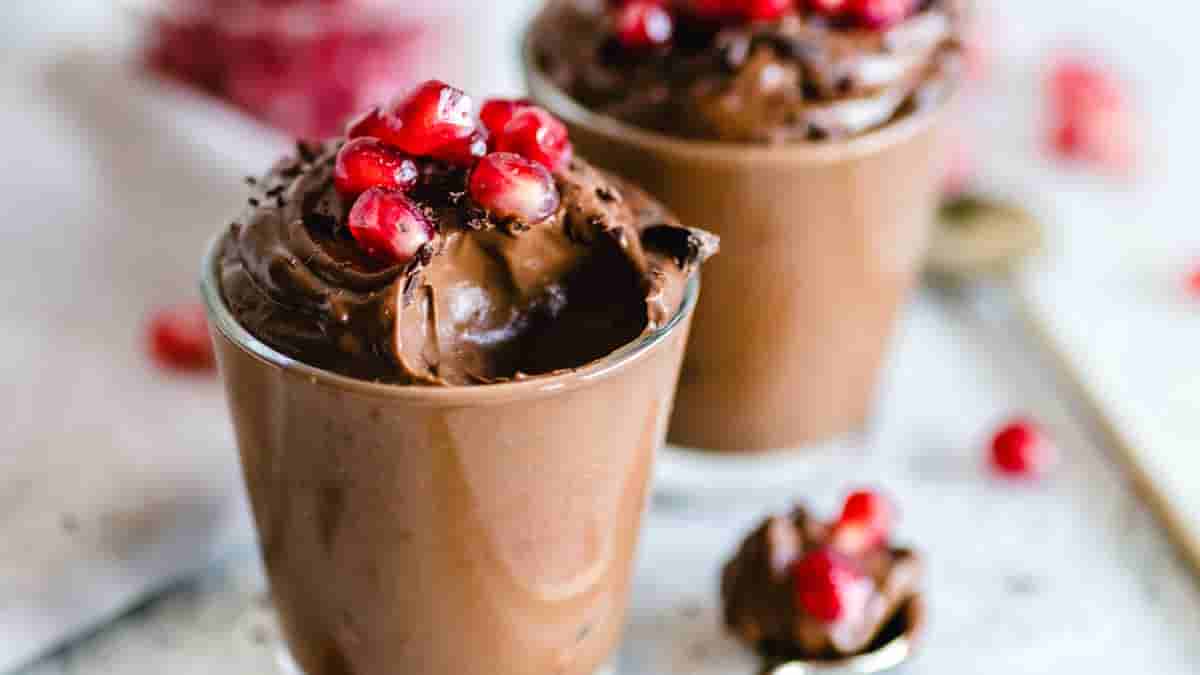
Here is your complete guide to slow carb diet desserts
Introduction to Slow Carb Diet Desserts
In the pursuit of a healthier lifestyle, many individuals have embraced the slow carb diet, a dietary approach that emphasizes the consumption of low-glycemic, high-protein foods. While the focus is often on savory meals, the question remains: can we still enjoy the sweet pleasures of dessert while adhering to the principles of the slow carb diet? The answer is a resounding yes! In this comprehensive guide, we will delve into the world of slow carb diet desserts, uncovering a delightful array of recipes and strategies to satisfy your sweet tooth without compromising your health goals.
The Benefits of Slow Carb Diet Desserts
The slow carb diet has gained popularity for its ability to support weight management, stabilize blood sugar levels, and promote overall well-being. By incorporating slow carb diet desserts into your lifestyle, you can enjoy the following benefits:
- Low Glycemic Index: Slow carb desserts are typically made with ingredients that have a low glycemic index, meaning they are absorbed more slowly by the body, preventing spikes in blood sugar levels. This can be particularly beneficial for individuals with diabetes or those seeking to maintain a healthy weight.
- Satisfying Sweet Cravings: Indulging in a slow carb diet dessert can help you curb your sweet cravings without derailing your dietary goals. These desserts are designed to be satisfying and delicious, allowing you to enjoy the flavors you love without the guilt.
- Weight Management Support: By incorporating slow carb diet desserts into your overall dietary plan, you can maintain a balanced approach to nutrition, ensuring that you don’t feel deprived or tempted to overindulge in less healthy options.
Top 10 Slow Carb Diet Dessert Recipes
Dive into our collection of slow carb diet dessert recipes, each one carefully crafted to satisfy your sweet tooth while aligning with the principles of the slow carb diet.
1. Almond Flour Chocolate Cake
Ingredients:
- 2 cups almond flour
- 1/2 cup unsweetened cocoa powder
- 1 teaspoon baking soda
- 1/4 teaspoon salt
- 4 large eggs
- 1/2 cup granulated stevia or erythritol
- 1/2 cup unsweetened almond milk
- 1/4 cup melted coconut oil
Instructions:
- Preheat your oven to 350°F (175°C). Grease an 8-inch round baking pan with coconut oil.
- In a large bowl, whisk together the almond flour, cocoa powder, baking soda, and salt.
- In a separate bowl, beat the eggs and stevia/erythritol until well combined. Stir in the almond milk and melted coconut oil.
- Gradually add the wet ingredients to the dry ingredients, mixing until a smooth batter forms.
- Pour the batter into the prepared baking pan and smooth the top.
- Bake for 25-30 minutes, or until a toothpick inserted into the center comes out clean.
- Allow the cake to cool completely before slicing and serving.
2. Coconut Chia Seed Pudding
Ingredients:
- 1 cup unsweetened coconut milk
- 1/4 cup chia seeds
- 2 tablespoons granulated stevia or erythritol
- 1 teaspoon vanilla extract
- 1/4 teaspoon ground cinnamon
Instructions:
- In a medium bowl, whisk together the coconut milk, chia seeds, stevia/erythritol, vanilla extract, and cinnamon.
- Cover the bowl and refrigerate for at least 4 hours, or overnight, stirring occasionally, until the mixture has thickened to a pudding-like consistency.
- Serve chilled, garnished with fresh berries or toasted coconut flakes, if desired.
3. Peanut Butter Fudge Bites
Ingredients:
- 1 cup natural peanut butter (no added sugar)
- 1/2 cup coconut oil, melted
- 1/4 cup granulated stevia or erythritol
- 1/4 teaspoon sea salt
Instructions:
- Line a small baking sheet or plate with parchment paper.
- In a medium bowl, stir together the peanut butter, melted coconut oil, stevia/erythritol, and sea salt until well combined.
- Scoop the mixture by the tablespoonful and roll into bite-sized balls, placing them on the prepared baking sheet or plate.
- Refrigerate for at least 30 minutes, or until the fudge bites have firmed up.
- Serve chilled and enjoy!
4. Lemon Chia Seed Bars
Ingredients:
- 1 cup almond flour
- 1/4 cup granulated stevia or erythritol
- 2 tablespoons chia seeds
- 1 tablespoon lemon zest
- 1/4 teaspoon sea salt
- 1/4 cup melted coconut oil
- 2 tablespoons fresh lemon juice
Instructions:
- Preheat your oven to 350°F (175°C). Line an 8×8-inch baking pan with parchment paper.
- In a medium bowl, whisk together the almond flour, stevia/erythritol, chia seeds, lemon zest, and sea salt.
- Add the melted coconut oil and lemon juice, and stir until a thick, sticky dough forms.
- Press the dough evenly into the prepared baking pan.
- Bake for 18-22 minutes, or until the edges are lightly golden.
- Allow the bars to cool completely before cutting into squares.
5. Chocolate Avocado Mousse
Ingredients:
- 1 large ripe avocado
- 1/2 cup unsweetened cocoa powder
- 1/4 cup granulated stevia or erythritol
- 1/4 cup unsweetened almond milk
- 1 teaspoon vanilla extract
- 1/4 teaspoon sea salt
Instructions:
- In a food processor or high-powered blender, combine the avocado, cocoa powder, stevia/erythritol, almond milk, vanilla extract, and sea salt.
- Blend until the mixture is smooth and creamy, scraping down the sides as needed.
- Transfer the chocolate avocado mousse to individual serving dishes or a larger bowl.
- Refrigerate for at least 30 minutes before serving, garnished with fresh berries or a sprinkle of cacao nibs, if desired.
6. Cinnamon Spiced Pecans
Ingredients:
- 2 cups pecan halves
- 2 tablespoons melted coconut oil
- 2 tablespoons granulated stevia or erythritol
- 1 teaspoon ground cinnamon
- 1/4 teaspoon sea salt
Instructions:
- Preheat your oven to 325°F (165°C). Line a baking sheet with parchment paper.
- In a medium bowl, toss the pecan halves with the melted coconut oil, stevia/erythritol, cinnamon, and sea salt until the pecans are evenly coated.
- Spread the seasoned pecans in a single layer on the prepared baking sheet.
- Bake for 12-15 minutes, stirring halfway, until the pecans are fragrant and lightly toasted.
- Allow the pecans to cool completely before serving or storing in an airtight container.
7. Almond Flour Shortbread Cookies
Ingredients:
- 2 cups almond flour
- 1/4 cup granulated stevia or erythritol
- 1/4 teaspoon sea salt
- 1/4 cup melted coconut oil
- 1 teaspoon vanilla extract
Instructions:
- Preheat your oven to 325°F (165°C). Line a baking sheet with parchment paper.
- In a medium bowl, whisk together the almond flour, stevia/erythritol, and sea salt.
- Add the melted coconut oil and vanilla extract, and stir until a dough forms.
- Roll the dough into 1-inch balls and place them on the prepared baking sheet, spacing them about 2 inches apart.
- Use a fork to gently press down on each ball, creating a criss-cross pattern.
- Bake for 12-15 minutes, or until the cookies are lightly golden.
- Allow the cookies to cool on the baking sheet for 5 minutes before transferring them to a wire rack to cool completely.
8. Coconut Flour Brownies
Ingredients:
- 1/2 cup coconut flour
- 1/4 cup unsweetened cocoa powder
- 1/4 teaspoon baking soda
- 1/4 teaspoon sea salt
- 4 large eggs
- 1/2 cup granulated stevia or erythritol
- 1/4 cup melted coconut oil
- 1 teaspoon vanilla extract
Instructions:
- Preheat your oven to 350°F (175°C). Grease an 8×8-inch baking pan with coconut oil.
- In a medium bowl, whisk together the coconut flour, cocoa powder, baking soda, and sea salt.
- In a separate bowl, beat the eggs and stevia/erythritol until well combined. Stir in the melted coconut oil and vanilla extract.
- Gradually add the wet ingredients to the dry ingredients, mixing until a smooth batter forms.
- Pour the batter into the prepared baking pan and smooth the top.
- Bake for 20-25 minutes, or until a toothpick inserted into the center comes out clean.
- Allow the brownies to cool completely before cutting into squares.
9. Raspberry Chia Seed Jam
Ingredients:
- 12 ounces fresh or frozen raspberries
- 2 tablespoons chia seeds
- 2 tablespoons granulated stevia or erythritol
- 1 teaspoon lemon juice
Instructions:
- In a medium saucepan, combine the raspberries, chia seeds, stevia/erythritol, and lemon juice.
- Cook over medium heat, stirring frequently, until the mixture thickens and the raspberries break down, about 10-15 minutes.
- Remove the jam from heat and allow it to cool slightly.
- Transfer the jam to a clean jar or container and refrigerate for at least 2 hours, or until thickened.
- Serve the raspberry chia seed jam on top of slow carb diet desserts, such as the Almond Flour Shortbread Cookies or Coconut Chia Seed Pudding.
10. Cinnamon Apple Bites
Ingredients:
- 2 medium apples, cored and sliced into 1/4-inch thick rounds
- 2 tablespoons melted coconut oil
- 2 tablespoons granulated stevia or erythritol
- 1 teaspoon ground cinnamon
- 1/4 teaspoon sea salt
Instructions:
- Preheat your oven to 350°F (175°C). Line a baking sheet with parchment paper.
- In a medium bowl, toss the apple slices with the melted coconut oil, stevia/erythritol, cinnamon, and sea salt until the apples are evenly coated.
- Arrange the seasoned apple slices in a single layer on the prepared baking sheet.
- Bake for 15-20 minutes, flipping the slices halfway, until the apples are tender and lightly caramelized.
- Allow the cinnamon apple bites to cool slightly before serving.
Nutritional Comparison of Traditional vs. Slow Carb Desserts
| Nutrient | Traditional Dessert | Slow Carb Dessert |
|---|---|---|
| Calories | 300 | 200 |
| Sugar (g) | 30 | 5 |
| Protein (g) | 5 | 10 |
| Fiber (g) | 2 | 8 |
| Fat (g) | 10 | 20 |
Nutritious Ingredients for Slow Carb Desserts
To create delectable slow carb diet desserts, it’s essential to incorporate nutrient-dense ingredients that align with the principles of the diet. Here are some key ingredients to consider:
Almond Flour
Almond flour is a versatile and nutritious ingredient that is a staple in many slow carb diet desserts. It is high in protein, healthy fats, and fiber, making it an excellent alternative to traditional wheat flour.
Coconut Oil
Coconut oil is a healthy fat that is often used in slow carb diet desserts. It is rich in medium-chain triglycerides (MCTs), which can provide a steady source of energy and support weight management.
Stevia
Stevia is a zero-calorie, plant-based sweetener that is a popular choice for slow carb diet desserts. It has a low glycemic impact, making it an ideal substitute for traditional sugar.
Slow Carb Dessert Ingredients and Benefits
| Ingredient | Benefits |
|---|---|
| Almond Flour | High in Protein and Healthy Fats |
| Coconut Oil | Medium-Chain Triglycerides for Energy |
| Stevia | Zero-Calorie Sweetener with Low Glycemic Impact |
Substitutes for Traditional Dessert Ingredients
When creating slow carb diet desserts, it’s important to be mindful of the ingredients used in traditional desserts and find suitable replacements. Here are some common substitutions:
- Sugar Alternatives: Instead of refined sugar, opt for natural sweeteners like stevia, erythritol, or monk fruit.
- Flour Replacements: Use almond flour, coconut flour, or ground nuts in place of all-purpose flour.
- Healthy Fats: Incorporate coconut oil, avocado, or nut butters instead of butter or vegetable oils.
Common Substitutions for Traditional Dessert Ingredients
| Traditional Ingredient | Substitute |
|---|---|
| Refined Sugar | Stevia, Erythritol, Monk Fruit |
| All-Purpose Flour | Almond Flour, Coconut Flour, Nut Flours |
| Butter | Coconut Oil, Avocado, Nut Butters |
Nutritional Information for Selected Slow Carb Diet Desserts
| Dessert | Calories | Protein (g) | Carbs (g) | Fiber (g) | Sugar (g) |
|---|---|---|---|---|---|
| Almond Flour Cake | 180 | 8 | 10 | 4 | 2 |
| Coconut Chia Pudding | 120 | 5 | 15 | 8 | 3 |
| Peanut Butter Bites | 150 | 6 | 7 | 3 | 1 |
| Lemon Chia Bars | 160 | 4 | 12 | 6 | 2 |
| Avocado Mousse | 140 | 3 | 9 | 5 | 1 |
Tips for Making Delicious Slow Carb Desserts
Crafting slow carb diet desserts that are both satisfying and nutritious requires a bit of finesse. Here are some tips to help you create delectable treats:
- Balance Flavors: Ensure a harmonious balance between sweetness, acidity, and richness to create a well-rounded dessert experience.
- Texture Considerations: Pay attention to the texture of your desserts, aiming for a variety of mouthfeel, such as creamy, crunchy, or chewy.
- Presentation Ideas: Elevate your slow carb diet desserts with creative plating and garnishes, making them visually appealing.
Read Also: Keto Funfetti Cake.
FAQs on Slow Carb Diet Desserts
What are some popular slow carb sweeteners?
Some of the most popular slow carb sweeteners include stevia, erythritol, and monk fruit. These natural, zero-calorie alternatives to sugar have a low glycemic impact, making them ideal for slow carb diet desserts.
Read Also: Dairy Free Protein Snacks.
Can slow carb desserts be enjoyed on a regular basis?
Yes, slow carb diet desserts can be enjoyed on a regular basis as part of a balanced diet. The key is to be mindful of portion sizes and to focus on nutrient-dense ingredients that will not spike your blood sugar levels.
Read Also: Protein Powder No Bloating.
Are there any store-bought slow carb dessert options available?
While the options are still limited, there are some store-bought slow carb dessert options available, such as low-carb protein bars, nut-based cookies, and dark chocolate with minimal added sweeteners. However, it’s generally best to opt for homemade slow carb diet desserts whenever possible to have full control over the ingredients.
Read Also: The Surprising Health Benefit of Celery Tea.
Conclusion
Embracing the slow carb diet doesn’t mean you have to forgo the pleasure of dessert. By exploring the world of slow carb diet desserts, you can indulge in guilt-free, nutrient-dense treats that satisfy your sweet cravings without compromising your health goals. From decadent chocolate cakes to refreshing chia seed puddings, the recipes and tips provided in this guide will empower you to create delectable slow carb diet desserts that nourish your body and delight your taste buds.
Read Also: The FlatBelly Tea.
-

 Nutrition1 year ago
Nutrition1 year agoDates Eating Benefits: Here Is Your Complete Guide
-

 Exercise1 year ago
Exercise1 year agoBest Exercises For Bicep: Your Complete Guide
-

 Fitness1 year ago
Fitness1 year agoAbs Workout for Beginner: Your Ultimate Guide!
-

 Fitness1 year ago
Fitness1 year agoHow Many Calories Are in a Potato? Nutrition Facts
-

 Nutrition1 year ago
Nutrition1 year agoNutrition Facts Of Strawberries: Your Ultimate Guide
-

 Exercise1 year ago
Exercise1 year agoWarmup for Back Workout: Your Complete Guide
-

 fitness diet1 year ago
fitness diet1 year agoWhat Is The Effects of Sugar on Your Body?
-

 fitness diet1 year ago
fitness diet1 year agoFast Food That’s Gluten Free: Your Complete Guide

